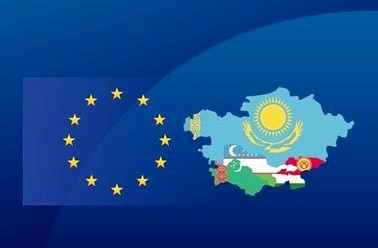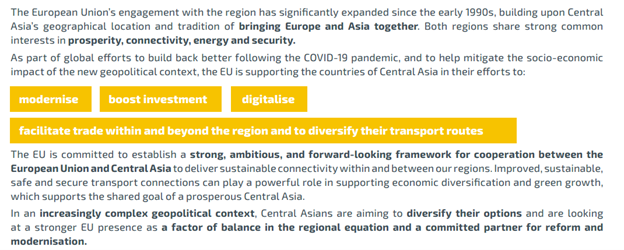Tariq Saeedi
Geologically, mainland Europe and mainland Asia are one gigantic continent – Eurasia. They share the same tectonic plates, and they are a contiguous landmass, with lack of water boundaries that define a continent.
They are separated by a line that is imaginary – the Ural River and the Ural Mountain.
The mass travels, sometimes friendly and sometimes not so friendly, between the people of Europe and Asia were taking place before the start of the documented history.
Some of it is evident from the genomic studies.
Shuai Chen published an interesting article in The Tech Interactive in November 2008. It is titled ‘What percent of DNA is different between a European and an Asian?’ — The article was an answer to a question asked by an elementary school student from California.
Here are some passages from the article of Shuai Chen:
“There isn’t much genetic difference between Asians and European. In fact, at the DNA level, two Asians can be more different than an Asian and a European person.
“But how can this be when the two groups look so different? It’s because those differences are only skin deep. And they don’t need much DNA to happen.
“Most of our DNA has nothing to do with how we look. It’s used to make our hearts, livers, spleens, and other organs. It tells us how tall we will be or tells our body to grow two arms, two legs, and hair on the top of our heads. It makes sure that our eyes are at the top of our faces, our noses are in the middle and our mouths are on the bottom.
“All these things can be somewhat different between people. And many of these differences come from having slightly different DNA.
“For example, my DNA might make my nose a different shape from yours. Or your DNA might tell you to grow taller than me.
“But most of these characteristics have nothing to do with whether or not someone is Asian or European. They have more to do with differences found between any two people. What this means is that most DNA differences are not specific to any ancestry group.
“There’s only a small part of DNA that’s involved in specific differences between Asians and Europeans. Things like eye shape and color, skin color and hair texture take only the tiniest fraction of our DNA.
“This is swamped out by the differences within individuals. We are all more similar than we are different. And a tall Asian might actually be more similar genetically to a tall European person then they are to a short Asian person.”
One of the earliest known expeditionary travel from Europe to Central Asia is that of the army led by Alexander the Great (in local literature, Alexander the Macedonian).
The Greco-Bactrian states existed, 250-120 BC, in parts of Central Asia and South Asia, including the Fergana Valley (Alexandria Eschate), Transoxiana (Alexandria on the Oxus) and Punjab (Alexandria on the Indus).
In 568, the Eastern Roman (Byzantine) general Zemarchus traveled to Samarkand and the court of the Western Turkic Kaganate.
In 1401–1402, Payo Gómez de Sotomayor, the first ambassador of Henry III of Castile traveled to the Timurid Empire.
In 1403–1404, Ruy González de Clavijo, the second ambassador of Henry III of Castile traveled to the Timurid Empire. He passed along the Black Sea coast of Turkey to Trabzon and then overland through Armenia, Azerbaijan, Iran and Turkmenistan to Uzbekistan. He also visited Tehran.
In 1557–1572, the English traveler, diplomat and explorer Anthony Jenkinson traveled across the Caspian Sea to Bukhara and Persia.
In the last 600 years, with a break of 70 years during the period of the Soviet Union, the travel and interaction between Europe and Central Asia remained quite frequent and significant.
The history of the Great Silk Road, spanning centuries, is a testimony to the broad and meaningful interaction between Europe and Central Asia.
There is the rich and intricate tapestry of commonalities between Europe and Central Asia. In so many ways, they are natural partners.
***
The First EU-Central Asia summit will take place, 3-4 April 2025, in Samarkand, Uzbekistan.
The President of the European Council, António Costa, along with the President of the European Commission Ursula von der Leyen, will be travelling to Uzbekistan for the summit.
The European Council website says that the summit will present a key opportunity for the EU to demonstrate its geopolitical interest in intensifying bilateral engagement and enhance regional cooperation with Central Asia.
Ashgabat is hosting a ministerial meeting on 4 March 2025 ahead of the summit. The outcomes of the ministerial meeting will bracket the outcomes of the Samarkand Summit.
The relations between the EU and Central Asia are based on the gradually increasing interaction.
Here are two screenshots from the EU-Central Asia Relations fact sheet, issued in October 2023:
There is plenty of goodwill on all sides to fill the EU-Central Asia partnership with new content. The fast-paced economic developments in the region are brimming with possibilities.
The forthcoming Samarkand Summit has every reason to be hugely successful, a giant leap into the rewarding future.
As mentioned a few paragraphs earlier, the European Council website says that he summit will present a key opportunity for the EU to demonstrate its geopolitical interest in intensifying bilateral engagement and enhance regional cooperation with Central Asia. — We would respectfully like to upgrade this statement: It would be useful to describe it as comprehensive interest instead of geopolitical interest. By redefining it as comprehensive, we are still acknowledging the presence of the geopolitical element but simultaneously underlining the availability of the vast opportunities for partnership in every area of economy and life.
In addition, there is the need to slightly redefine the paradigm, covering the following points:
1.The entire interaction needs to be based on equality, mutual respect and mutual benefit. It already is, but there should be an unwavering focus on this.
2. The partnership ideas between EU and the region must solely be based on the potential available from within.
3. Any processes taking place outside the region should not find their way into the agenda.
4. The region follows a de facto policy of neutrality and balance. Any attempts to shift or alter it would possibly impact the outcomes of the summit. /// nCa, 3 March 2025


